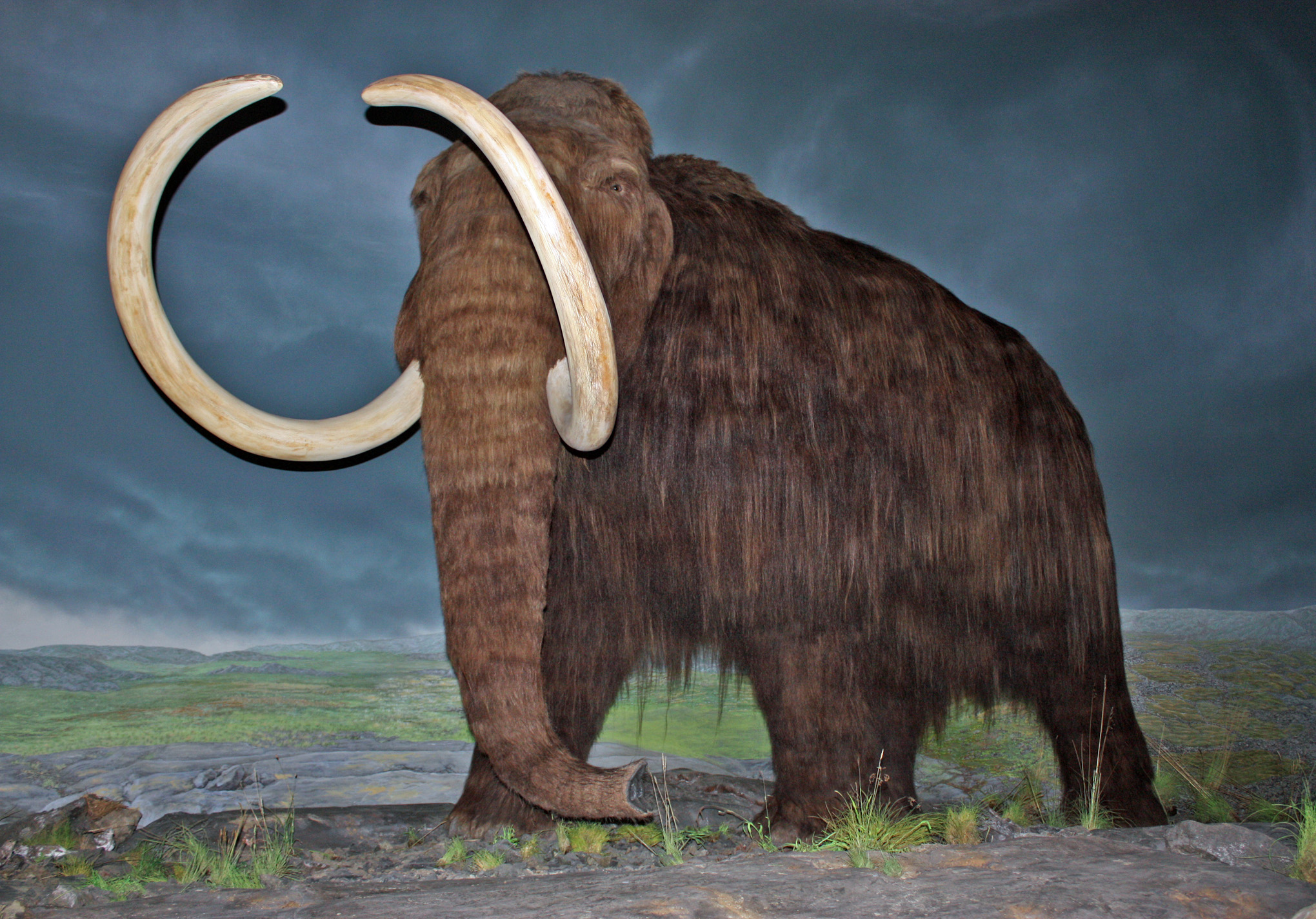Image: Flickr/V.H. Hammer
A man charged with thinking outside the box to solve huge societal problems with game-changing ideas at one of the world’s most innovative companies stood on stage at a future tech conference in Washington DC last weekend and told a genetic scientist that he “would love to be alive to see a woolly mammoth.” The genetic scientist looked back at him and laughed.
“What, are you sick?” he asked.
The implication of the exchange, between Google X’s Richard DeVaul and Stewart Brand, a de-extinction expert, was clear: There’s a mission to bring back one of history’s most famous animals, it’s already underway, and it’s closer to becoming a reality than even some of the most forward-looking minds think it is.
For all the talk and attention it gets, de-extincting an animal isn’t exactly easy—it’s difficult to clone cells from an animal that has been dead for thousands of years, tougher to turn it into a viable embryo, and, most importantly, more difficult still to find a closely-related animal that can serve as a surrogate mother to give birth to the cloned animal. There’s certainly work still being done in that area, but, increasingly, researchers are working to hybridize existing animals with extinct ones in order to create what Brand calls a “2.0” version of the animal.

Brand introduced a new paradigm where a species isn’t truly extinct until we have no traces of DNA with which to revive it. Image: Jason Koebler
That’s what Harvard synthetic biologist George Church is doing with woolly mammoths. Using a genome editing technique known as CRISPR, Church is working on inserting three key genes from woolly mammoths into Asian elephant cells, with the hope of eventually creating a hybrid between the two that will ideally be more mammoth-like than elephant-like.
The project and technology has been touched on before, most notably in a lengthy New York Times Magazine article from February, but Church tells me that the team has now successfully migrated the three genes, which gave the woolly mammoth its furry appearance, extra layer of fat, and cold-resistant blood. In theory, given what we know about both the woolly mammoth genome and the Asian elephant genome, the final product will be something that more closely resembles the former than the latter.
“We have CRISPR working in elephant cells and have already made three genomic changes,” Church told me in an email. “We are making pluripotent stems cells capable of organ culture tests—initially of DNA variations involved in cold-resistance in blood, hair and subcutaneous fat.”
If those initial tests work in the lab, the team can move forward with creating a “mammoth” embryo. Whether the resulting creature is a mammoth, an elephant, or something in between, it’s not really clear. In fact, there could be several different generations of hybrids—each one more mammoth-like than the last.
“Those three genetic changes are just a start. We have many more in the queue. The initial goal is to make cold-resistant elephant/mammoth hybrids,” Church told me. “Tissue tests initially allow us to get feedback much faster than the 22-month gestation time. As the technology gets faster and less expensive, the percent mammoth contribution to the genome can increase. The project is moving quickly, but the timeline depends on the rate of technology developments”
Because the base cells will still be those of an Asian elephant, in theory, the team won’t run into the same problems a de-extinction team in Spain did with the bucardo: Cloned embryos of the subspecies of mountain goat (which went extinct in 2000) was transplanted into 57 goats. Of those, just one was able to carry the clone to term, and the animal that was born died almost instantly.
“The Asian elephant is closer related to the mammoth than it is to African elephants, who they hybridize with,” Brand said at Smithsonian Magazine’s The Future is Here event in Washington DC last weekend.
If Church’s name sounds familiar, it’s because he’s one of the most famous geneticists of all time, and because he’s become well known for proposing (and going through with) genetic experiments that others might only consider. Last year, his comments to Der Spiegel were misconstrued to suggest that he was looking for an “extremely adventurous female human” to help carry a Neanderthal baby to term. Church quickly said he wasn’t working on that—but the point stands that this kind of science is already possible.
“This is moving very quickly. If we can fund it, Church will have a woolly mammoth embryo in three years time to implant into a cooperative Asian elephant mother,” Brand said. “Two years of gestation go by, and we will see the first baby woolly mammoth in a really long time.”
And, it’s not just limited to mammoths. Brand is working with a team at the University of California, Santa Cruz, to do essentially the same thing that Church is doing with mammoths with passenger pigeons, which went extinct 100 years ago. That team would use the band-tailed pigeon as its living surrogate.
It’d seem as though bringing back the more recent (and smaller) passenger pigeon would be easier than hybridizing a mammoth with an elephant, but researchers are still working on sequencing and preparing passenger pigeon DNA, meaning the process is in an earlier stage than Church’s.

Brand explaining how common passenger pigeons once were. Image: Jason Koebler
There are, perhaps, still ethical quandaries to consider, but both of these projects appear to be moving ahead at full speed. The technology to do it exists, and scientists are getting better at understanding what certain parts of the genome do all the time. It now seems as if it’s only a matter of time until we see woolly mammoths for the first time in 4,000 years.
“We could have herds of woolly mammoths back in the Arctic,” Brand said. “If all goes well, these could be back and could still be around long after we’re gone.”
Related articles






